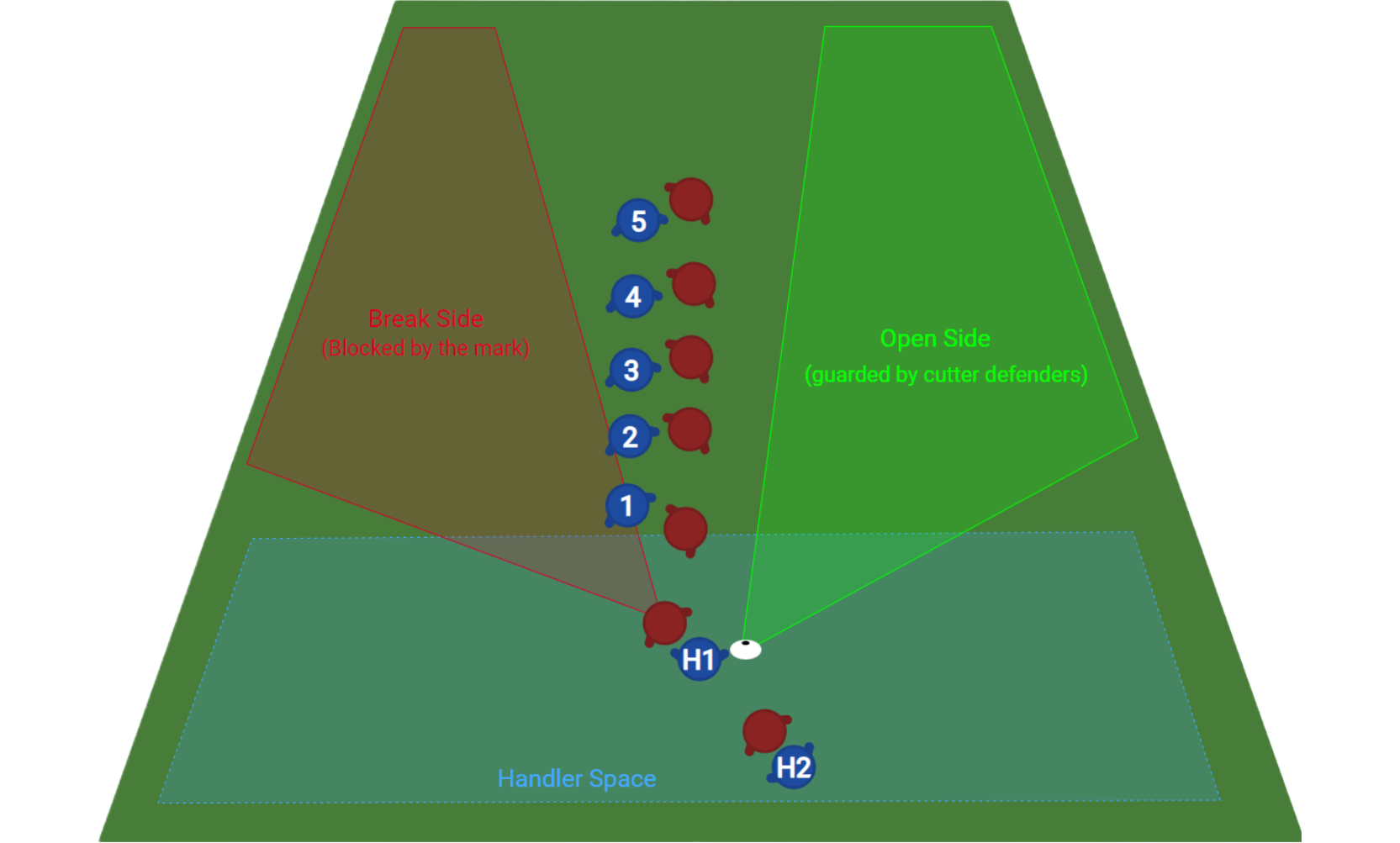Basic Explanation & Setup
The basic idea of vertical stack is to create two large spaces/lanes on each side of the field by having cutters line up in a vertical line roughly in the middle of the field in front of the thrower (#1-5 in the image below). Depending on the direction of the force, one of the lanes will be on the open side and the other on the break side. There is also typically one player set up as a reset handler to receive an easy throw to maintain possession should no downfield players become available. The positioning of this handler may vary from team to team and where the disc is on the field.
The primary method of advancing the disc is by having cutters getting open and receiving the disc in one of the lanes. It is generally easier to get the disc on the open side because by definition, it is the side that the mark is allowing throws to go to. Cutters still need to shake their own individual defender by making a decisive cut and even though cutter defenders are going to be aware of the force and are going to prioritize defending the open side, it is generally considered easier to make completions on the open side than on the break side. Below is an walkthrough detailing typical cuts on the open side and how players should reposition as the disc moves down the field.
As shown in the walkthrough above, cuts are typically made from the back of the stack, meaning that the cutter farthest from the disc should be the one to make the first cut. When the first cut is made, the player that is next in stack will become the new back of stack and should then prepare to make the next cut. There are situations where cuts will come from somewhere else in the stack but they are usually special cases where they are clearly communicated by the team beforehand such as a set play or in reaction to something the defense does like a poach.
When a cutter is looked off or has completed a throw, they should to return to the stack somewhere in the middle—not the front or the back—as quickly as possible so as to make space for subsequent cuts. This is called clearing. Coaches will often emphasize that players should clear as fast as they cut. Players should also be conscious of not interfering with teammates cuts. The walkthrough below demonstrates some suggested clearing routes after some typical cuts


No Comments